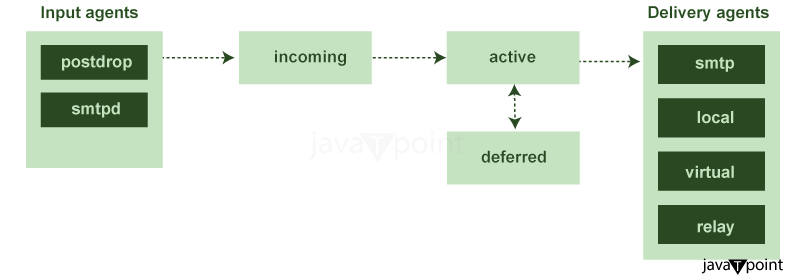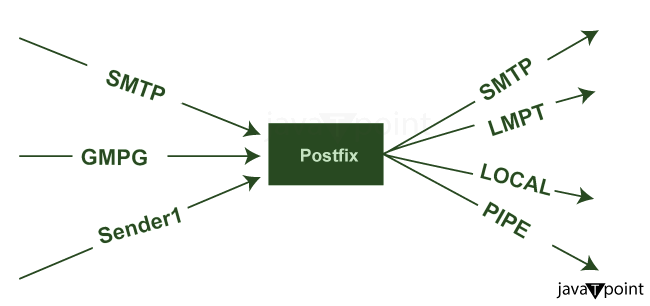Postfix deferred queueIntroductionIn the domain of email transmission, the notion of a "Postfix deferred queue" may appear confusing to the uninitiated. However, it plays an important role in ensuring the seamless delivery of your electronic mail. This article focuses on an in-depth journey into the domain of the Postfix deferred queue, explaining its significance, operational difficulty, and its potential result on the email delivery process. Defining PostfixPostfix, a widely adopted and highly adaptable mail transfer agent (MTA), is the linchpin for routing and dispatching electronic correspondences within Unix-like operating systems. It exerts a significant influence on the email infrastructures of myriad organizations. Among Postfix's critical components lies the Deferred Queue, which serves as a transient repository for emails incapable of immediate dispatch. Understanding Postfix Deferred QueueTo unravel the enigma of the Postfix deferred queue, it is imperative to first fathom the rudiments of Postfix itself. Postfix, a prominent mail transfer agent (MTA), governs the dispatch, receipt, and routing of emails on a mail server. The deferred queue, an elemental constituent of Postfix, shoulders the responsibility of temporarily housing emails that cannot be instantaneously consigned. 
The use of DeferralThe journey of email delivery is not invariably straightforward. A multitude of factors can impede the instantaneous transmission of an email - ranging from the temporary unavailability of a recipient's mailbox, congestion within the queue, to issues with the recipient's server. When such impediments manifest, Postfix exercises prudence by placing the email within the deferred queue, thereby averting immediate delivery attempts. Operation of the Deferred QueueAfter explaining the purpose of the deferred queue, let's examine how it functions inside the Postfix network. 1. Temporary Reservoir In the event an email encounters obstacles during transmission, Postfix relegates it to the precincts of the deferred queue directory. This directory functions as a transient sanctuary for problematic missives. 2. Resilience through Retries Postfix is not disposed to relinquish deferred emails; instead, it employs a retrial mechanism. Periodically, Postfix endeavors to retransmit the deferred emails, scrutinizing whether the underlying impediments leading to deferral have been ameliorated. This tenacity guarantees that your emails enjoy the optimal probability of reaching their intended destinations. 3. Interval Escalation Postfix embraces a time-based retrial strategy, progressively elongating the temporal intervals between successive retrial attempts. This stratagem obviates the risk of inundating recipient servers with a volley of retrial solicitations. The Significance of the Postfix Deferred QueueComprehending the import of the Postfix deferred queue is of paramount importance for those entrusted with the stewardship of email delivery. The salience arises from two critical factors: 1. Augmented Email Reliability The deferred queue bolsters the reliability of email by accommodating transient disruptions in delivery. Absent this mechanism, emails may be perilously waylaid or returned to their origin. 2. Better Deliverability By effecting a retrial mechanism, the deferred queue augments the likelihood of successful email delivery over time. This facet can wield a constructive influence on your email deliverability statistics. 
Troubleshooting the Postfix Deferred QueueFamiliarizing oneself with the vagaries of email delivery is essential. To this end, understanding the commonplace issues entwined with the Postfix deferred queue and the efficacious remedies are imperative. Ins and Outs of Message ReboundsMastery over interpreting bounce messages assumes an imperative role when contending with deferred emails. This knowledge empowers you to decipher these messages and undertake rectifying actions. Harnessing Logs for DebuggingThe logs furnished by Postfix serve as a treasure trove of insights into email delivery tribulations. Discovering the means to harness these logs in order to identify and redress issues within the deferred queue is an indispensable skill. Exploring Origins of Deferred QueueDiverse factors conspire to place emails within the deferred queue. It is imperative to acquaint oneself with these factors in order to adeptly address them: 1. Recipient Server Unavailability When the recipient's server experiences transient downtimes or operational issues, Postfix judiciously defers email until successful delivery becomes feasible. 2. Full Recipient Mailbox When a recipient's mailbox attains its capacity limit, emails are precluded from reaching their intended destinations. Postfix persists in retrials until mailbox space becomes available. 3. Temporary Network Problems Challenges in network connectivity can also provoke email deferral. Postfix recommences delivery attempts upon the restoration of network stability. Efficient Queue ManagementPrioritizing Deliveries To avert the predicament of critical communications languishing in the queue, it is prudent to accord precedence to delivery attempts emanating from your email server. This approach ensures that pivotal messages are the recipients of swifter delivery. Configuring Retrial IntervalsA judicious adjustment of the retrial intervals in Postfix can yield significant dividends. Striking the right equilibrium between frequent retrials and affording sufficient time for autonomous issue resolution is of paramount importance. Monitoring and AlertsImplementing robust monitoring and alert systems assumes paramount importance in order to remain apprised of the status of your deferred queue. Proactive management forestalls the escalation of delivery issues.
Next TopicProperties of tree in data structure
|
 For Videos Join Our Youtube Channel: Join Now
For Videos Join Our Youtube Channel: Join Now
Feedback
- Send your Feedback to [email protected]
Help Others, Please Share









